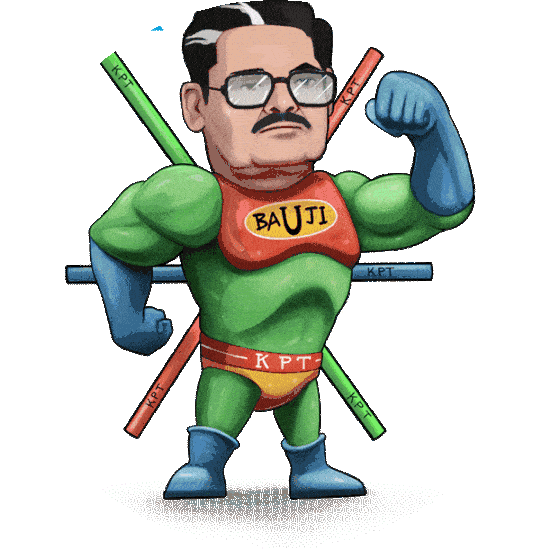
17 Sep From Traditional to Modern: The Evolution of Plumbing Pipes
The evolution of plumbing pipes is a fascinating journey through time, showcasing how advances in materials and technology have transformed the way we manage water systems in our homes and businesses. From the rudimentary clay pipes of ancient civilizations to the sophisticated synthetic materials of today, plumbing pipes have come a long way. This blog will explore the historical progression of plumbing pipes, highlighting key innovations and their impact on modern plumbing systems. We’ll delve into the evolution of plumbing pipes, examining how each advancement has contributed to the efficiency, durability, and functionality of today’s plumbing infrastructure.
Ancient Plumbing: The Beginnings
For millennia, plumbing has played a crucial role in the development of human society. Ancient civilizations such as the Egyptians, Romans, and Greeks developed early plumbing systems using materials that were available to them at the time.
Clay Pipes:
One of the earliest materials used for plumbing pipes was clay. Ancient Egyptians utilized clay pipes to create rudimentary water systems. These pipes were fired in kilns to make them durable enough to carry water. They were often shaped into sections that could be fitted together, and their primary use was for drainage and irrigation.
Lead Pipes:
The Romans, known for their advanced engineering skills, introduced lead pipes around 2000 years ago. These pipes were more flexible and easier to work with compared to clay. Lead pipes were used in aqueducts, public baths, and even in private homes. However, the use of lead pipes had significant drawbacks, including health risks due to lead poisoning, which became evident over time.
The Middle Ages: Innovation and Stagnation
During the Middle Ages, plumbing technology experienced a period of stagnation. The focus shifted from innovation to maintenance of existing systems. Plumbing infrastructure was largely limited to basic water supply and waste management in monasteries and castles.
Wood Pipes:
In medieval Europe, wooden pipes became a common solution for transporting water. These pipes were hollowed-out logs bound together with metal bands. While functional, wooden pipes had limitations, such as susceptibility to rot and leakage.
Iron Pipes:
By the late Middle Ages, cast iron pipes began to emerge. These pipes were stronger and more durable than their wooden predecessors. They were used primarily for municipal water supply and sewer systems, laying the groundwork for modern plumbing infrastructure.
The Industrial Revolution: A New Era of Plumbing
The Industrial Revolution in the 18th and 19th centuries brought significant changes to plumbing technology. Advances in materials and manufacturing processes led to the development of new types of pipes that would revolutionize the industry.
Cast Iron Pipes:
Cast iron pipes became widely used during the Industrial Revolution due to their strength and durability. They were ideal for large-scale water distribution and sewer systems. Cast iron pipes were resistant to corrosion and capable of withstanding high pressures, making them a significant improvement over earlier materials.
Galvanized Steel Pipes:
In the late 19th century, galvanized steel pipes became popular for residential plumbing. A protective layer of zinc was applied to these pipes to inhibit rust and corrosion. Galvanized steel pipes were durable and relatively easy to install, but they had their drawbacks, including the potential for rust over time and reduced water flow due to internal scaling.
The 20th Century marked the emergence of synthetic materials.
The 20th Century witnessed the advent of synthetic materials, which revolutionized plumbing systems and provided a variety of new choices for pipes.
PVC Pipes:
Polyvinyl chloride (PVC) pipes were introduced in the mid-20th century as a revolutionary alternative to metal pipes. PVC pipes are characterized by their lightweight nature, corrosion resistance, and ease of installation. They quickly became popular for residential and commercial plumbing due to their affordability and versatility. PVC pipes are also used in various applications, including drainage, irrigation, and electrical conduit.
CPVC Pipes:
Chlorinated polyvinyl chloride (CPVC) pipes emerged as an even more advanced option in the latter part of the 20th century. CPVC pipes offer higher temperature resistance compared to PVC pipes, making them suitable for higher-temperature applications. They are also resistant to corrosion and chemical damage, further enhancing their appeal to modern plumbing systems.
PEX Pipes:
Cross-linked polyethylene (PEX) pipes became a game-changer in the late 20th and early 21st centuries. PEX pipes are highly flexible, making them easy to install and ideal for both residential and commercial plumbing. They are resistant to scaling and corrosion, and their flexibility allows for fewer joints and fittings, reducing the risk of leaks. PEX pipes are also resistant to freezing, making them suitable for various climates.
Modern Plumbing: Innovative Solutions
As we navigate through the 21st century, the plumbing industry continues to evolve with groundbreaking innovations that address contemporary demands for efficiency, sustainability, and durability. Here’s a deeper dive into the advanced solutions that are shaping the future of plumbing:
PPR Pipes: A Leap in Performance and Reliability
Polypropylene Random Copolymer (PPR) Pipes have become a cornerstone of modern plumbing due to their remarkable performance characteristics. Developed in the late 20th century, PPR pipes have quickly gained prominence in both residential and commercial plumbing applications.
- Temperature and Pressure Resistance: PPR pipes excel in handling extreme temperatures and pressures, making them versatile for a variety of applications. They can withstand temperatures up to 95°C (203°F) for hot water and remain durable in cold water applications as well. This makes them suitable for use in heating systems, potable water supply, and industrial processes.
- Corrosion Resistance: Unlike metal pipes, PPR pipes are inherently resistant to corrosion, which is a common problem in traditional plumbing materials. This resistance to corrosion extends their lifespan and reduces maintenance needs.
- Jointing Methods: PPR pipes are joined using a heat fusion process, which creates a seamless connection between pipes and fittings. This method ensures that the system is leak-proof and enhances the overall strength and durability of the installation.
- Environmental Impact: PPR pipes are produced using a process that generates minimal waste, and they are fully recyclable, contributing to a reduced environmental footprint.
Composite Pipes: Combining the Best of Both Worlds
Composite Pipes represent a fusion of different materials to optimize performance and functionality. These pipes are engineered to capitalize on the advantages of both metals and plastics, resulting in a product that meets diverse plumbing needs.
- Material Composition: Composite pipes typically combine a layer of metal, such as aluminium, with layers of plastic, like cross-linked polyethylene (PEX), polybutylene (PB) or polypropylene random copolymer (PPR). This combination offers a unique set of benefits that improve the performance of the pipe.
- Enhanced Durability: The metal layer provides additional strength and rigidity, while the plastic layers offer flexibility and resistance to corrosion. This results in a pipe that is both robust and versatile, suitable for a range of applications from residential plumbing to industrial settings.
- Thermal Efficiency: Composite pipes often feature superior insulation properties, which help to maintain the temperature of the fluids transported. This can lead to energy savings in heating systems and reduce the need for additional insulation.
- Ease of Installation: The flexibility of composite pipes simplifies the installation process, allowing for easier handling and fewer joints. This has the potential to decrease both installation duration and expenses.
Smart Plumbing: The Future of Water Management
Smart Plumbing technology has revolutionized how we interact with and manage our plumbing systems. By integrating advanced sensors and IoT (Internet of Things) devices, smart plumbing offers unprecedented control and efficiency.
- Real-Time Monitoring: Smart sensors can track water usage in real-time, providing valuable data on consumption patterns. This information helps homeowners and businesses make informed decisions about their water use, potentially leading to cost savings and more efficient water management.
- Leak Detection and Prevention: Advanced sensors can detect leaks and monitor the condition of plumbing systems. Early detection of leaks can prevent significant damage and reduce water wastage. Some smart systems even offer automatic shutoff features to stop leaks before they become major issues.
- Remote Control: Many smart plumbing systems allow users to control their plumbing infrastructure remotely through smartphone apps or web interfaces. This capability enables users to adjust settings, schedule maintenance, and respond to issues from anywhere in the world.
- Predictive Maintenance: Smart plumbing systems use data analytics to predict potential problems before they occur. By analyzing patterns and trends, these systems can alert users to potential issues and suggest preventative measures, reducing the likelihood of unexpected failures.
- Water Quality Monitoring: Some advanced smart systems are equipped to monitor water quality, detecting contaminants and ensuring that the water supply remains safe and clean. This feature is particularly valuable in areas with concerns about water quality or in systems where high purity is required.
Conclusion
The journey from traditional plumbing materials to modern innovations reflects the significant strides made in technology and engineering, marking the Evolution of Plumbing Pipes. PPR pipes, composite pipes, and smart plumbing systems each represent a step forward in addressing the challenges of contemporary plumbing needs. As technology continues to advance, we can anticipate even more groundbreaking solutions that will further enhance the efficiency, reliability, and sustainability of plumbing systems. Embracing these innovations not only improves the performance of our plumbing infrastructure but also contributes to a more sustainable and efficient future.
FAQs
Q1.Why are PPR pipes considered superior to traditional metal pipes like galvanized steel and copper?
Ans: PPR pipes surpass traditional metal pipes in several ways. Unlike galvanized steel or copper, PPR pipes are resistant to corrosion, ensuring a longer lifespan without rust or scaling issues. They also handle higher temperatures and pressures, making them more reliable for both hot and cold water systems. Moreover, PPR pipes are lightweight, easy to install, and require fewer fittings, reducing the risk of leaks. These factors make PPR pipes a more durable and efficient choice for modern plumbing systems.
Q2.How do PPR pipes compare to PVC and CPVC pipes in terms of performance?
Ans: While PVC and CPVC pipes are popular for their affordability and corrosion resistance, PPR pipes outperform them in handling extreme temperatures and pressures. PPR pipes are more versatile and can be used in a broader range of applications, including high-temperature systems like heating and industrial plumbing. The heat fusion method used in joining PPR pipes creates a seamless and leak-proof connection, offering superior strength compared to the solvent welding used in PVC and CPVC systems.
Q3.What makes PPR pipes a better choice than PEX pipes for plumbing?
Ans: PPR pipes excel over PEX pipes due to their higher temperature and pressure resistance, making them suitable for demanding applications like heating systems and industrial use. While PEX pipes are flexible and easy to install, PPR pipes offer greater durability and environmental benefits. PPR pipes are fully recyclable, making them an eco-friendly option, and their heat fusion jointing ensures a more secure and long-lasting installation compared to the crimping or clamping used in PEX systems.



